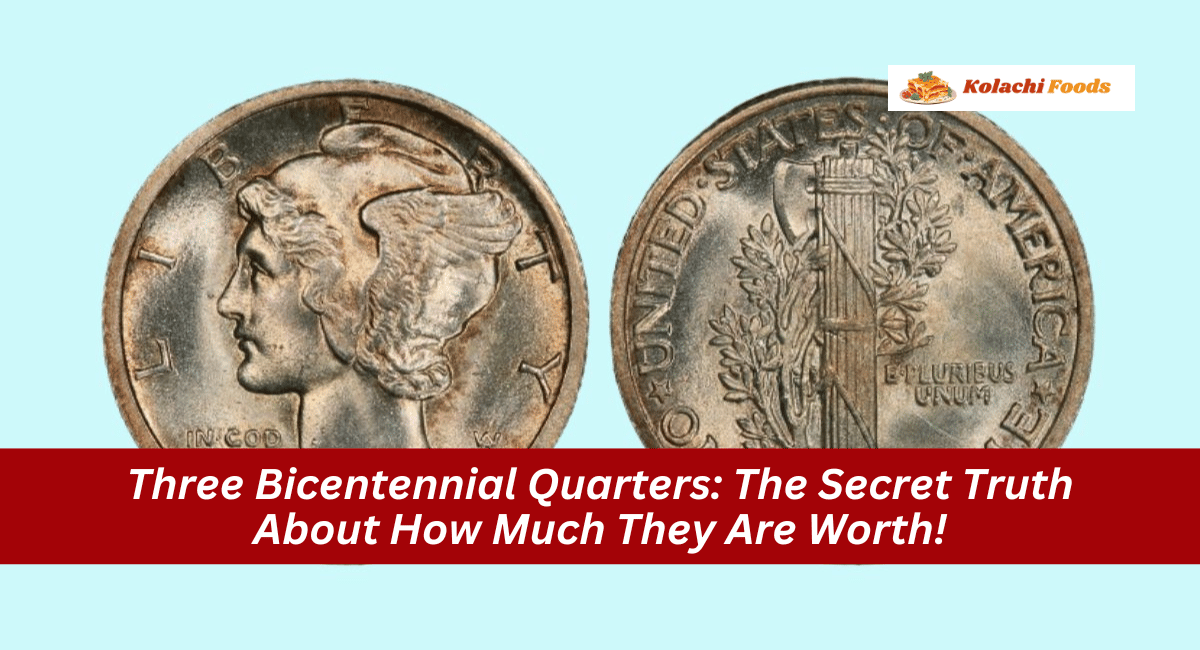Bicentennial Quarters, minted in 1975 and 1976, are cherished by collectors and history enthusiasts alike for commemorating the 200th anniversary of the United States. With their distinctive “drummer boy” design on the reverse, these quarters became iconic, symbolizing the nation’s bicentennial celebration.
While most of these quarters are still in circulation and worth only 25 cents, certain varieties are much more valuable than others. In this article, we’ll dive into the truth behind three rare Bicentennial Quarters and explain how to identify them.
1976-S Silver Proof Bicentennial Quarter
One of the most prized Bicentennial Quarters is the 1976-S Silver Proof edition. Struck in 40% silver, this coin was produced specifically for collectors and sold only in special proof sets. The silver content alone makes it a standout among its counterparts, but its limited mintage adds to its allure.
Rarity and Value: The 1976-S Silver Proof quarter is valuable due to both its silver composition and its restricted availability. Depending on its condition, this quarter can be worth anywhere from $10 to $300. Coins in near-perfect condition, graded by professional coin services, fetch the higher end of that range.
How to Spot It: Identifying the 1976-S Silver Proof is easy if you know what to look for. The coin has an “S” mint mark, signifying that it was struck at the San Francisco Mint. Additionally, it has a mirror-like finish typical of proof coins.
1976-D Bicentennial Quarter (Doubled Die Error)
The 1976-D Bicentennial Quarter with a doubled die error is another valuable variety. A doubled die error occurs when the coin’s design is inadvertently struck twice, creating a slight duplication of images or text. These errors are highly sought after by collectors because of their rarity.
Rarity and Value: Doubled die error Bicentennial Quarters can range in value from $100 to $1,000, depending on the visibility of the doubling and the overall condition of the coin. The more pronounced the error and the better the condition, the higher the price.
How to Spot It: To identify a 1976-D Bicentennial quarter with a doubled die error, closely inspect the lettering on the obverse, especially the inscriptions “In God We Trust” and “Liberty.” Look for signs of doubling lines that appear slightly offset or duplicated.
1976 No Mint Mark Bicentennial Quarter
The 1976 No Mint Mark Bicentennial Quarter was minted in Philadelphia, which did not use mint marks for quarters produced during that period. While these coins are not as rare as silver proofs or error coins, they can still be valuable when found in pristine, uncirculated condition.
Rarity and Value: In perfect condition, a no mint mark Bicentennial Quarter can be worth up to $30. Though it’s common to find these coins in circulation, finding one in mint condition is much rarer.
How to Spot It: The easiest way to identify a 1976 No Mint Mark Bicentennial Quarter is to look for the absence of a mint mark beneath the date on the obverse side of the coin. While millions of these quarters were produced, few have been preserved in top condition, making pristine examples more desirable.
| Coin | Mint Mark | Composition | Unique Feature | Estimated Value |
|---|---|---|---|---|
| 1976-S Silver Proof Quarter | S | 40% Silver | Mirror-like proof finish | $10 to $300 |
| 1976-D Bicentennial Double Die | D | Copper-Nickel | Doubling on “Liberty” and phrases | $100 to $1,000 |
| 1976 No Mint Mark Bicentennial | None | Copper-Nickel | No mint mark, uncirculated | Up to $30 |
While millions of Bicentennial Quarters were minted for general circulation, the rare and valuable ones stand out due to their silver content, minting errors, or condition.
Whether you’re a seasoned collector or simply curious about the change in your pocket, it’s worth taking a closer look at any Bicentennial Quarters you come across. You might just find one of these hidden treasures.
FAQs
Are Bicentennial Quarters Rare?
Most Bicentennial Quarters are common, but rare varieties, such as the 1976-S Silver Proof and coins with minting errors, can be quite valuable.
What makes a Bicentennial Quarter valuable?
Bicentennial Quarters are valuable if they contain silver, feature minting errors (like the doubled die error), or are in uncirculated, pristine condition.
How much is a 1976-S Silver Proof Bicentennial Quarter worth?
Depending on its condition, a 1976-S Silver Proof quarter can be worth between $10 and $300, thanks to its silver content and limited mintage.
What is a doubled die error?
A doubled die error occurs when a coin is struck twice during minting, causing part of the design or lettering to appear duplicated. This error can significantly increase the coin’s value.
Should I keep Bicentennial Quarters?
Yes, especially if they have silver content, minting errors, or are in excellent condition. These factors can make them worth much more than their face value of 25 cents.
READ MORE: $808K Bicentennial Quarter: Value of the Coin Representing America’s 200th Birthday

